Grammar is just one of those things you have to learn, despite the lack of additives to make it sweeter. It doesn't have to be a painful medicine, however: though it might not be the most exciting subject in school, it's really not that difficult, certainly not as difficult as the general dislike for it would seem to indicate.
At its root, grammar is no more than the rules guiding the proper use and placement of words in written form. Sure, there are a lot of those rules, but the really important ones are applicable in the majority of cases, and the rest stem from those fundamentals. And yes, there are exceptions, but those make grammar interesting, more than just a rigid system.
Again, though, there isn't really a way to make grammar other than what it is (a list of rules). You could add cute animal pictures and funny games, but that doesn't change the content students need to learn and internalize. So the real question when it comes to grammar curriculum is, Which program most clearly presents and explains the rules for my child?
Does your child just need lots of practice? A workbook course like Analytical Grammar or Winston Grammar might work best. Should they learn the Latin roots of English words and grammar? Check out The Latin Road to English Grammar. Are you concerned that your kids get character instruction at the same time? Rod & Staff English teaches grammar very well from a conservative Christian perspective.
The best grammar courses don't simply require rote memorization.The best ones show students why and how the rules apply, imparting understanding alongside information. Too many programs are basically catalogs of facts, part of the reason so many of us have an innate fear of grammar instruction (either receiving or giving it). But as curriculum development evolves, courses that go beyond the bare essentials to offer reasons why are becoming more popular and more widely available.
Here's a quick summary of the grammar curricula we've reviewed, in alphabetical order:
 |
A Beka Grammar & Writing Grades K-12
For a more traditional textbook approach that balances grammar, spelling and composition, A Beka Grammar & Writing is a solid choice. You can hand these worktexts to your kids and let them complete all the work on their own, though you'll want to guide them in composition. The authors don't use particularly innovative or unique methods to teach, but they do cover all the bases thoroughly and engagingly.
|
 |
Analytical Grammar Grades 4-12
Analytical Grammar is straightforward, comprehensive, and while it doesn't cover composition it's very application-oriented. Best of all, it's brief. The authors are under the impression that, if grammar is taught right the first time, you don't need to rehash it over and over and over again, so they aim for mastery in the exercises and leave it at that. The focus on diagramming really helps kids understand the principles of grammar, rather than just the functions.
|
 |
CLP Applications of Grammar Grades 7-12
CLP Applications of Grammar isn't quite as thorough with its grammar elements as some courses, but the way it integrates grammar and composition instruction is very effective. Unlike many grammar programs these days, this one actually teaches kids to diagram sentences, thus demonstrating how the different parts of language work together to form cogent communication. These workbooks are Bible-based, easy to use, and don't limit instruction to grammar alone (concepts like research, editing, etc. are also introduced).
|
 |
BJU Writing & Grammar Grades K-12
As with every program from Bob Jones, this one is teacher intensive. Yet (also a pretty sure thing with Bob Jones products), the effort will pay off in the form of an excellent grammar and composition education for your children. Because grammar without writing is dead, BJU Press has combined the two, and demonstrates how they interact and why each is significant. Thoroughly Bible-based and easy to use for both students and instructors, BJU Writing & Grammar covers all the bases and all the grades very well.
|
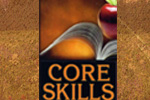 |
Core Skills: Language Arts Grades 1-9
Core Skills: Language Arts is a series of workbooks designed to reinforce previously-learned material (though some use it all by itself; not recommended). Each consumable page covers one grammar or composition related topic, with a number of written exercises to cement the concept. These are great for test-prep or simple drill, but not for much else.
|
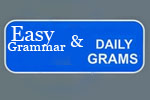 |
Easy Grammar / Daily Grams Grades 1-12
Easy Grammar and Daily Grams present short, manageable lessons and TONS of review. These are consumable workbooks (the Easy Grammar series also features teacher's guides) that have pretty much become the standard for home school grammar instruction, though they aren't necessarily the best. A word of caution: neither series moves quickly, and kids end up doing the same simple exercises ad nauseum, which can easily burn even the most enthusiastic grammar student to a cinder.
|
 |
Editor in Chief Grades 1-12
Editor in Chief offers engaging grammar review built around editing, in which kids pretend to work for a newspaper. Students are presented with brief passages to read and comb for mistakes or errors, which they then correct; these consumable workbooks from the Critical Thinking Company are clear in their presentation and make excellent review worksheets, provided your students have had grammar instruction already: these are not a grammar curriculum, and should not be used as such.
|
 |
First Language Lessons Grades K-5
If you're looking for a comprehensive language arts program that teaches grammar through positive examples, First Language Lessons for younger students might be just what you need. Equal parts Classical-style and Charlotte Mason education, kids do lots of copywork in the course of learning grammar, spelling, reading, basic composition, and handwriting.
|
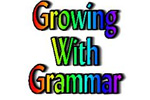 |
Growing With Grammar Grades 1-8
Growing With Grammar takes a similar approach to Analytical Grammar, though it's not quite as deep. Still, the workbooks are easy to navigate while the exercises themselves are challenging and will certainly teach your kids what they need to know. These don't look very professional, but they're a solid series, and their ease-of-use and affordable price will likely grow them a decent following.
|
 |
Hake Grammar & Writing Grades 5-8
Hake Grammar & Writing is available for late elementary to middle school students. These workbooks are not engaging, but they're efficient, and students will get all the grammar they need, and one of the best integrations of composition with grammar we've seen. The end of grammar is not itself but clear communication, and the authors of this course seem to understand that perfectly well.
|
 |
Jensen's Grammar Grades 7-9
Jensen's Grammar is a straightforward, no-frills single-volume course. Grammar instruction appears on the left hand page and exercises on the right. Practice sentences follow a theme or opening to a story that students can continue when they write more sentences for that topic.
|
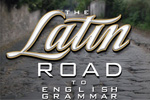 |
Latin Road to English Grammar Grades 4-12
The Latin Road to English Grammar is similarly non-traditional. Kids are shown how English grammar was built on the Latin model, and how so many of the words in English are derivatives of Latin words. This way, they not only learn the rules of English grammar, they understand them, and understanding is the better part of a solid education. Happily for Classical education diehards, students (and parents) also learn Latin. This may be the best grammar course we carry, but it's also the most time- and teacher-intensive.
|
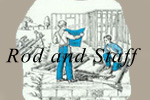 |
Rod & Staff English Grades 2-10
Rod & Staff English features no frills—grammar and composition are presented clearly with a strong Christian character element many parents love. This isn't the most fun curriculum available (illustrations are spare and all in black and white; stories are all built around a sort of moralistic character-building), but it is one of the best. Kids will get a thorough grounding in the nature and function of English, and be able to write and understand it on their own.
|
 |
Shurley English Grades 1-8
Shurley English is an attempt at a fairly comprehensive approach, and while it certainly can be used to teach kids effectively, it suffers greatly from poor execution in the teacher's manuals. There's good content here, don't get us wrong, but the teacher guides (which are essential; this is not a student-directed program) are pretty confusing and take a long time to figure out.
|
 |
Singapore English Grades K-8
It may come as a surprise that some of the better grammar workbooks come from Singapore. Already renowned for their math curriculum, their multiple grammar series have recently been introduced to the U.S. (English is the educational language in Singapore). Students are taught the fundamentals of grammar and composition through engaging worktexts easy to implement for teachers and students alike; these are best used to supplement a more complete grammar course.
|
 |
The Mother Tongue Grammar Grades 6-12
This is, we believe, the most thorough grammar course we offer. It's also the oldest, originally published in 1901, revised in 1908, and re-edited and expanded in 2014. Through 143 chapter lessons and 8 appendices, students go from learning what grammar is to a college-level grasp of it. The book is long and probably daunting at first glance, but chapters are short and everything is taught clearly and in an intuitive progression with each new concept building on those before it.
|
 |
Winston Grammar Grades 5-12
One of the most innovative grammar course we carry, Winston Grammar takes a multisensory approach. Kids use cards, speak out loud, and complete workbook exercises in order to get grammar instruction coming at them from all angles. Probably best used as a remedial course or for those who struggle with the subject, this series can be used by anyone with antsy kids or kids who just don't care that much for grammar.
|
In the early grades, a Charlotte Mason approach is ideal for grammar instruction. Kids learn mostly through imitation, doing copywork and dictation exercises, as well as observing pictures, retelling stories in their own words, and spending time in nature. English for the Thoughtful Child and Simply Grammar are workbooks that implement this method to good effect. Even better, however, are the two hardcover books by Emma Serl, Primary and Intermediate Language Lessons, two thoroughly Charlotte Mason-influenced texts that use its best aspects to teach kids the fundamentals of the English language.
A much more common approach is simply to have kids complete worktexts. This is a less organic style, but there are good programs that use it.The strength of a program like BJU Writing & Grammar is that it integrates grammar and composition instruction, showing how the first is necessary for the second.
If you aren't up on all the latest grammar programs (and who is, really?), even a list this size can seem pretty daunting. Fear not! The important thing is that your kids learn grammar and retain the information, and most of these courses will do a fine job. Peruse our reviews of each one to find what works for you and your child, and get crackin' on those prepositions and pluperfect tenses. They may not now, but when it comes time to write a research paper or even just a personal essay, your children will thank you.
Review by C. Hollis Crossman
C. Hollis Crossman used to be a child. Now he's a husband and father who loves church, good food, and weird stuff. He might be a mythical creature, but he's definitely not a centaur. Read more of his reviews
here.
Did you find this review helpful?